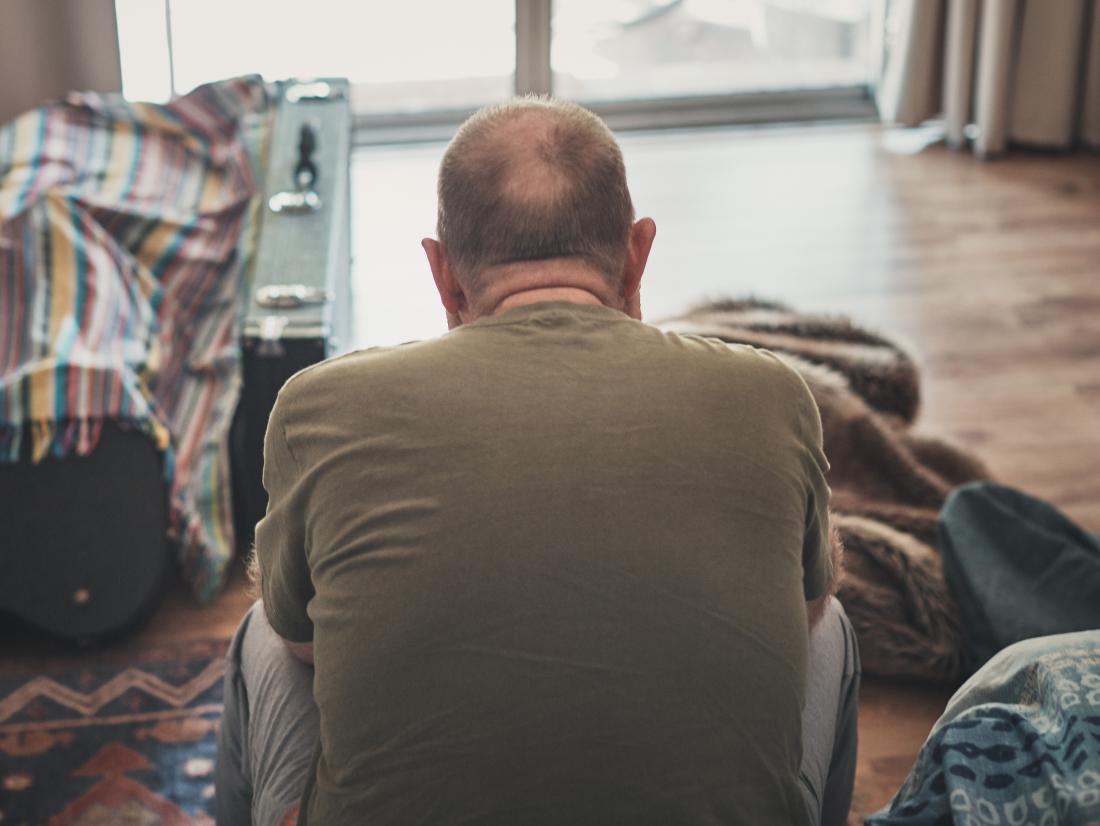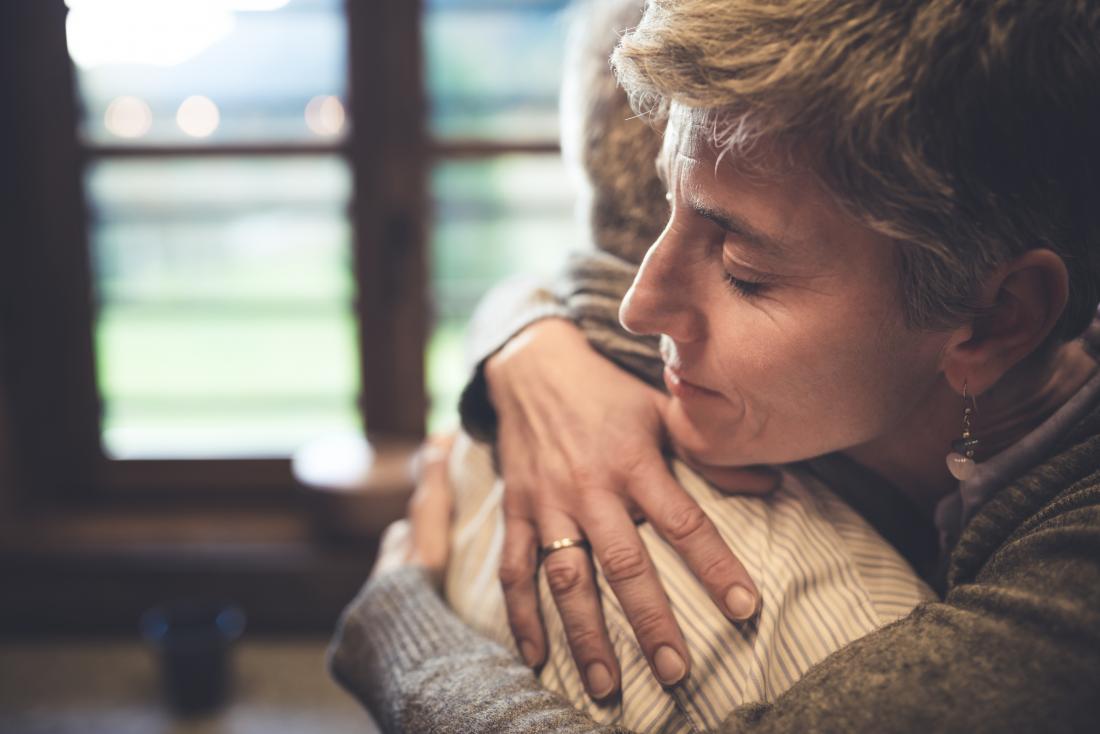Suicide rates are rising in the United States. Between 1999 and 2017, there was a 33% increase in deaths by suicide.
Suicide prevention
- If you know someone at immediate risk of self-harm, suicide, or hurting another person:
- Call 911 or the local emergency number.
- Stay with the person until professional help arrives.
- Remove any weapons, medications, or other potentially harmful objects.
- Listen to the person without judgment.
- If you or someone you know is having thoughts of suicide, a prevention hotline can help. The National Suicide Prevention Lifeline is available 24 hours a day at 1-800-273-8255.
Suicide warning signs
A person does not have to display every possible warning sign to be at risk of suicide. Indeed, a single warning sign could signal that a person is at risk.
Some common suicide warning signs include:
Verbal signs

Behavioral signs may indicate that a person is considering suicide.
A person considering suicide may talk about ending their life or express feelings of hopelessness. Some warning signs include:
- talking about suicide
- expressing a desire to die
- talking about a specific suicide plan
- saying that they feel like a burden to others
- expressing rage or a desire to seek vengeance
- expressing feelings of entrapment
- talking about depression or pain being unbearable
Behavioral signs
People considering suicide may show their intentions in indirect ways. Some behaviors that correlate with a risk of suicide include:
- giving away possessions
- changes in sleep or eating habits
- engaging in self-harm
- exploring suicide methods, such as by researching suicide online
- reaching out to loved ones, especially to say goodbye or express love or anger
- writing a suicide note
- ignoring hobbies that they used to enjoy
- withdrawing from daily routines, such as going to school or work
Mood signs
Changes in a person’s mood may indicate that they are thinking about or planning suicide. Some mood-related symptoms to look for include:
- a history of mental health symptoms
- psychotic symptoms, such as appearing disconnected from reality or believing in things that do not exist
- hopelessness, despair, or apathy
- anger or agitation
- depression or anxiety
- shame or humiliation
- loneliness or isolation
- extreme mood swings
- feeling like a burden
Additionally, some people at risk of suicide show a sudden, unexplained improvement in their mood. This mood shift may have occurred because they have made the decision to die and feel relief.
Risk factors
Several risk factors increase the likelihood that a person may attempt suicide, especially when they display several warning signs.
Medical

People with a history of depression may be more at risk of suicide.
Some medical conditions may increase the risk of suicide, including:
Environmental
Suicide does not happen in isolation but is a widespread cultural phenomenon. Exposure to suicide, either in a person’s community or through the media, can cause an increase in suicide rates.
People with the following environmental risk factors are more likely to be at risk of suicide:
- a history of trauma, abuse, or maltreatment as a child
- access to lethal means, particularly guns
- isolation or lack of social support
- religious or cultural beliefs that support suicide in certain contexts
- local outbreaks of suicide
- the recent suicide of a celebrity whom the person admired
- the recent suicide of a loved one
- a recent loss, including the loss of a relationship or job
- inadequate access to quality mental health care
- mental health stigma
- resistance to seeking help
- a previous suicide attempt
Stay in the know. Get our free daily newsletter
You’ve got questions. We’ve got answers. Expert, evidence-based advice delivered straight to your inbox to help you take control of your health
Your privacy is important to us.
Family history
Family-related risk factors include:
- close family members with a history of suicide or mental illness
- lack of family support
- current or past abuse by family members
- a recent stressful change in the family, such as a divorce
Protective factors
Protective factors may reduce the risk of a person dying by suicide. People concerned about a loved one’s suicidal behavior should consider working to put as many protective factors in place as possible.
The absence of protective factors is itself a risk factor for suicide because people who lack them may feel hopeless or isolated.
Some suicide protective factors include:
- access to quality, timely, supportive mental health care
- support from loved ones
- lack of mental health stigma, for example, family and friends who view suicidal thoughts as a treatable problem and not a personal failing
- a sense of connection to others
- nonviolent conflict resolution skills
- limited or no access to guns or other lethal means
What to do

A person can support a loved one by being empathetic and nonjudgemental.
People attempting to help a loved one who feels suicidal should take the threat seriously. Some strategies that may help include:
- Supporting the person to get mental health care and going with them to an appointment (with permission).
- Asking the person to develop a safety plan that includes calling a loved one before attempting suicide.
- Removing guns and any other lethal means from the home.
- Avoiding judging the person or dismissing the seriousness of their problems.
- Focusing on the person’s feelings rather than personal feelings about their situation.
- Checking in with the person frequently and not waiting for them to call, text, or email.
- Minimizing the amount of time that the person spends alone, especially if they have access to a gun.
- Calling 911 if the threat is immediate.
- Avoiding leaving a person in critical risk alone.
- Calling the National Suicide Prevention Lifeline on 1-800-273-8255.
- Contacting other trustworthy people who may be able to offer support. Do not contact people who will cause more stress or blame the person.
- Talking openly about suicide by asking direct questions, such as:
- Are you thinking about suicide?
- Do you know how you would do it?
- Do you have the means to do it?
- Do you already have a date planned?
People should remember that intense emotional pain and thoughts of suicide can be overwhelming. It is essential to be kind, empathetic, and gentle toward a person experiencing these issues.
People having thoughts of suicide should know that suicidal feelings may represent a temporary crisis. It is possible to find hope and to get rid of these feelings without suicide.
Some strategies that may help include:
- Contacting a therapist or other mental health professional. Treating mental health issues can eliminate suicidal thoughts.
- Contacting a trusted loved one who will listen without judgment.
- Developing a safety plan that includes ideas for what to do the next time suicidal feelings arise. Sharing this plan with a trusted loved one can also help.
- Committing to delaying suicide for a day, a week, or a month.
- Calling the National Suicide Prevention Lifeline on 1-800-273-8255. People do not have to share their identity, and the call is free.
Conclusion
Suicide is a preventable tragedy. Friends, family, colleagues, and other people can help by offering support and connecting at-risk individuals to preventive resources.
Every suicide threat is serious because every life is valuable. Do not delay calling for help. Most people who are having thoughts of suicide do not really want their lives to end — they want the pain to end.
For more advice on supporting a person who is thinking of suicide, visit the American Foundation for Suicide Prevention.
